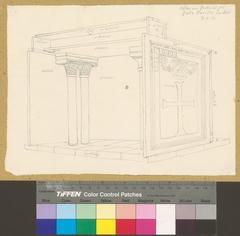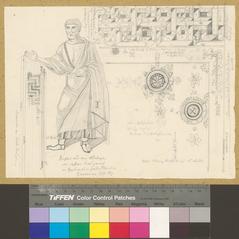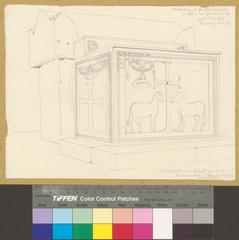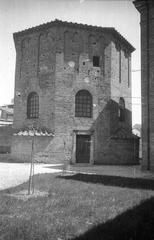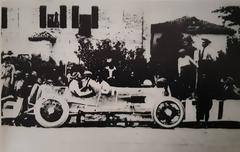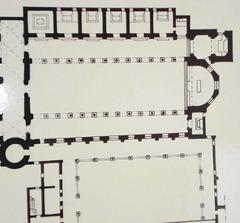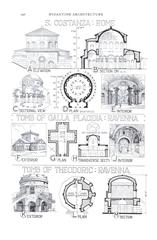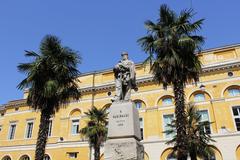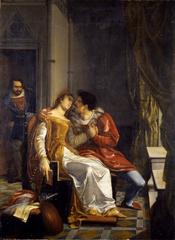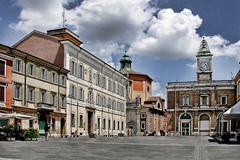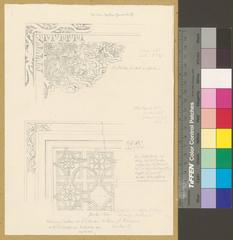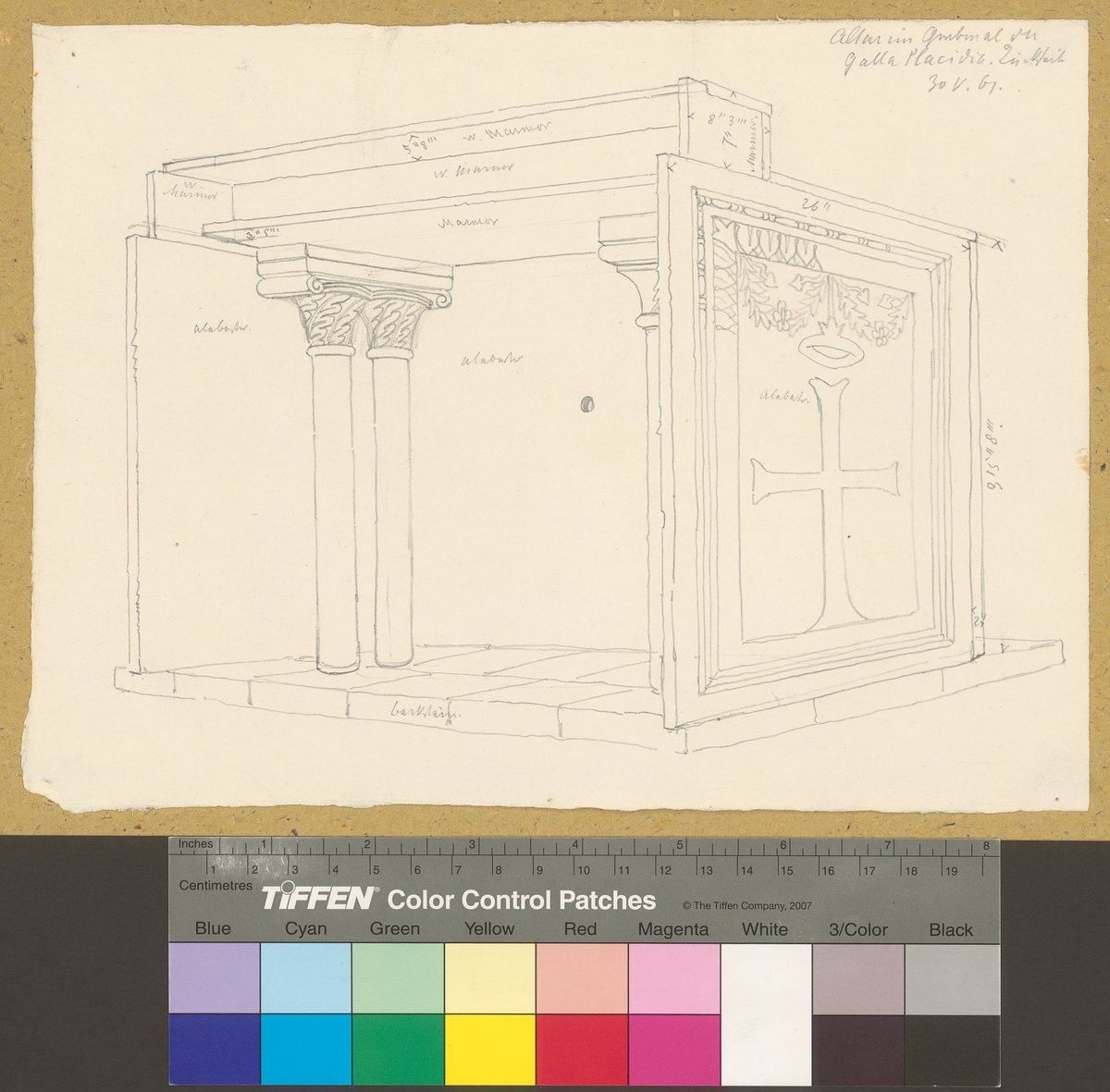
Mausoleum of Galla Placidia: Visiting Hours, Tickets, and Ravenna Historical Sites Guide
Date: 14/06/2025
Introduction
The Mausoleum of Galla Placidia is a jewel of early Christian and late Roman art, located in the heart of Ravenna, Italy. Celebrated for its dazzling mosaics and rich historical context, this UNESCO World Heritage site is an essential destination for art lovers, history enthusiasts, and cultural travelers. Built between 425 and 450 CE under the patronage of Galla Placidia—daughter of Emperor Theodosius I and regent of the Western Roman Empire—the mausoleum embodies the transition from classical Rome to the Christian Middle Ages. Its modest brick exterior contrasts with an interior of breathtaking mosaic artistry, symbolizing the triumph of faith and the promise of eternal life. This guide provides a detailed overview of the mausoleum’s history, architecture, visiting hours, ticketing, accessibility, travel tips, and nearby attractions to help you plan an unforgettable visit.
Table of Contents
- Origins and Patronage
- Purpose and Historical Context
- Architectural Features and Interior Design
- Mosaic Program and Symbolism
- Visiting Information: Hours, Tickets, and Access
- Travel Tips and Visitor Experience
- Nearby Ravenna Historical Sites
- Preservation, Legacy, and UNESCO Status
- Frequently Asked Questions (FAQ)
- Conclusion and Further Resources
Origins and Patronage
The Mausoleum of Galla Placidia was commissioned during one of Ravenna’s most influential periods, as the Western Roman Empire’s capital shifted from Milan to Ravenna. Galla Placidia, daughter of Emperor Theodosius I, was a formidable political figure and regent for her son Valentinian III (Wikipedia). Her life was marked by dynastic alliances and religious devotion, and her patronage extended to several churches in Ravenna, Rome, and Jerusalem (mausoleums.com). The mausoleum stands as a testament to her enduring legacy in shaping religious and artistic developments of her era.
Purpose and Historical Context
Despite the name, the Mausoleum of Galla Placidia was originally built as a cruciform oratory attached to the Church of the Holy Cross (Santa Croce), not as her burial site. While legend and medieval tradition placed her tomb here, historical evidence suggests Galla Placidia died in Rome in 450 CE and was likely interred at Old Saint Peter’s Basilica (Wikipedia). The mausoleum’s association with her name stems from later medieval sources and the presence of three sarcophagi within the structure, now believed to be symbolic rather than actual royal tombs (mausoleums.com).
The 5th century saw Ravenna emerge as a major imperial and religious center. Its defensible location and cultural dynamism made it a crucible for the fusion of classical, Christian, and Byzantine influences (smarthistory.org). The mausoleum was part of a broader program of monumental religious architecture commissioned by Galla Placidia and her contemporaries (Wikipedia).
Architectural Features and Interior Design
Exterior
The mausoleum’s exterior is built from plain Roman brick, featuring a cruciform plan measuring roughly 12.7 by 10.2 meters (UNESCO). Its understated façade, with small arched windows and simple decorative pilasters, reflects early Christian ideals of humility and spiritual focus.
Structure and Engineering
Internally, the mausoleum features a central dome supported by pendentives and barrel vaults across the four arms. The dome’s construction uses lightweight materials, including pumice, to reduce load, while alabaster window panels diffuse natural light, creating an ethereal ambiance (Khan Academy).
Mosaic Program and Symbolism
The mausoleum’s interior is a dazzling display of early Christian mosaic art, considered among the finest and best-preserved in the world (mausoleums.com). The iconography revolves around themes of salvation, resurrection, and eternal life.
Key mosaic highlights:
- The Dome: A deep blue sky with golden stars and a radiant golden cross at its center, symbolizing the promise of heaven.
- Evangelists’ Symbols: The four pendentives bear the symbols of Matthew (angel), Mark (lion), Luke (ox), and John (eagle) (Khan Academy).
- The Good Shepherd: Above the north entrance, Christ is depicted as a youthful shepherd surrounded by sheep, blending imperial iconography and Christian symbolism.
- Saint Lawrence: A lunette portrays the martyrdom of Saint Lawrence, referencing the building’s original dedication.
- Geometric and Floral Motifs: Vines, acanthus leaves, and rosettes symbolize paradise and eternal life.
Artists used the opus tessellatum technique, employing colored glass, gold leaf, and stone tesserae to craft shimmering, immersive scenes that glow in the filtered light (Smarthistory).
Visiting Information: Hours, Tickets, and Access
Location
The mausoleum is located in central Ravenna, directly behind the Basilica di San Vitale, and is easily reached on foot or by public transport from Ravenna train station.
Visiting Hours
- March 30 – September 30: Daily, 9:00 AM – 7:00 PM
- October 1 – March 29: Daily, 9:00 AM – 5:30 PM
- Closed: December 25 and January 1
- Last admission: 15 minutes before closing (timetravelturtle.com)
Tickets and Reservations
- Combination Tickets: Admission is via a multi-site pass, including the Basilica di San Vitale, Neonian Baptistery, and others. As of 2025, the five-site pass is €12.50 and the three-site pass is €10.50 (€9.50 for ages 6–18) (european-traveler.com).
- Time-slot reservations are mandatory due to limited capacity. Book online or at the Basilica di San Vitale or Archbishop’s Museum (european-traveler.com).
Accessibility
- Ground-level entrance via the Basilica di San Vitale cloisters.
- Assistance available for visitors with disabilities.
- Small and sometimes crowded interior; contact local tourist offices for tailored support.
Photography
- Non-flash photography is permitted, but flash is strictly prohibited to protect the mosaics. Policies may change; check on-site for updates.
Visitor Flow
To safeguard the delicate mosaics, visitor groups spend about five minutes inside. Advance reservations and timing your visit during quieter periods will enhance your experience (european-traveler.com).
Travel Tips and Visitor Experience
- Arrive early or late in the afternoon to enjoy the mosaics in optimal natural light and avoid crowds.
- Guided tours offer deeper insights into the mausoleum’s history and art. Private tours are available for small groups and families, often including skip-the-line access.
- Nearby amenities: Ravenna’s city center features cafes, restaurants, and shops. The Mercato Coperto is ideal for refreshments (timetravelturtle.com).
Nearby Ravenna Historical Sites
- Basilica di San Vitale: Renowned for its Byzantine mosaics.
- Neonian Baptistery: One of the oldest monuments in Ravenna.
- Basilica of Sant’Apollinare Nuovo: Noted for its extensive early Christian mosaics.
- Archiepiscopal Museum and Chapel: Houses precious artifacts and mosaics.
- Dante’s Tomb and Piazza del Popolo: For a broader cultural experience.
Combined tickets and guided tours covering these sites are highly recommended for a comprehensive understanding of Ravenna’s early Christian heritage.
Preservation, Legacy, and UNESCO Status
The mausoleum’s outstanding mosaics and architectural integrity have been safeguarded through careful preservation, including floor elevation to prevent flooding (Wikipedia). In 1996, it was inscribed as part of the “Early Christian Monuments of Ravenna” UNESCO World Heritage site (UNESCO). Ongoing conservation measures and strict visitor controls ensure the site’s protection for future generations.
The mausoleum’s mosaics influenced the development of Byzantine art and Christian iconography, bridging classical Roman and medieval artistic traditions (smarthistory.org). Its symbolic program, architectural innovation, and association with Galla Placidia make it a cornerstone of Western cultural heritage.
Frequently Asked Questions (FAQ)
Q: What are the Mausoleum of Galla Placidia visiting hours?
A: Open daily from 9:00 AM to 7:00 PM (March 30 – September 30) and 9:00 AM to 5:30 PM (October 1 – March 29). Closed on December 25 and January 1.
Q: How do I book tickets and time slots?
A: Tickets are available as multi-site passes online or at the Basilica di San Vitale and Archbishop’s Museum. Time-slot reservations are mandatory.
Q: Can I take photos inside?
A: Non-flash photography is allowed; flash and tripods are prohibited.
Q: Are guided tours available?
A: Yes, both group and private tours are available. Booking in advance is advised.
Q: Is the mausoleum accessible for visitors with disabilities?
A: Yes, with ground-level access and assistance available, though crowding may affect comfort.
Q: What other historical sites are nearby?
A: Basilica di San Vitale, Neonian Baptistery, Basilica of Sant’Apollinare Nuovo, Archiepiscopal Museum, and Dante’s Tomb.
Conclusion and Call to Action
The Mausoleum of Galla Placidia represents the profound intersection of late Roman imperial history, Christian spirituality, and artistic innovation. Its intimate space, awe-inspiring mosaics, and central location among Ravenna’s UNESCO sites provide a rich and contemplative visitor experience. To make the most of your trip, plan ahead—book your tickets and time slots, consider a guided tour, and explore Ravenna’s vibrant historical landscape.
For the latest information on visiting hours, ticketing, and guided tours, download the Audiala app and consult official resources. Explore more of Ravenna’s unique heritage through our related articles and follow us on social media for updates and inspiration.
Visual and Media Recommendations
- High-quality images of the mausoleum exterior, interior mosaics (Good Shepherd, starry dome), and visitor flow, each with descriptive alt tags (e.g., “Mausoleum of Galla Placidia visiting hours interior mosaic”).
- An interactive map highlighting the mausoleum’s location and other UNESCO sites.
- Links to virtual tours if available.
Internal and External Links
- [Guide to Basilica di San Vitale Visiting Hours and Tickets]
- [Top UNESCO Historical Sites to Visit in Ravenna]
- [Ravenna Travel Tips and Itineraries]
- Ravenna Tourism Official Website
- Early Christian Monuments of Ravenna – UNESCO World Heritage Site
Summary and Further Exploration
The Mausoleum of Galla Placidia stands as a timeless testament to Ravenna’s significance as a crossroads of cultures and faith. Its architectural simplicity, combined with the luminous beauty of its mosaics, invites visitors into a space where history, art, and spirituality converge. To fully appreciate Ravenna’s rich heritage, explore the city’s many UNESCO sites and plan your visit with official resources and digital tools for a seamless and rewarding experience.
References
- Mausoleum of Galla Placidia in Ravenna: History, Architecture, and Visiting Information, 2025
- Mausoleum of Galla Placidia, mausoleums.com, 2025
- The Mausoleum of Galla Placidia, Smarthistory, 2025
- Mausoleum of Galla Placidia, Khan Academy, 2025
- Early Christian Monuments of Ravenna, UNESCO World Heritage Centre, 1996
- Mausoleum of Galla Placidia, Ravenna Mosaici, 2025
- Visiting the Mausoleum of Galla Placidia, European Traveler, 2025
- Mausoleum of Galla Placidia Visitor Information, Timetravel Turtle, 2025
- Mausoleum of Galla Placidia, Atlas Obscura, 2025
- Ravenna Tourism Official Website, 2025
